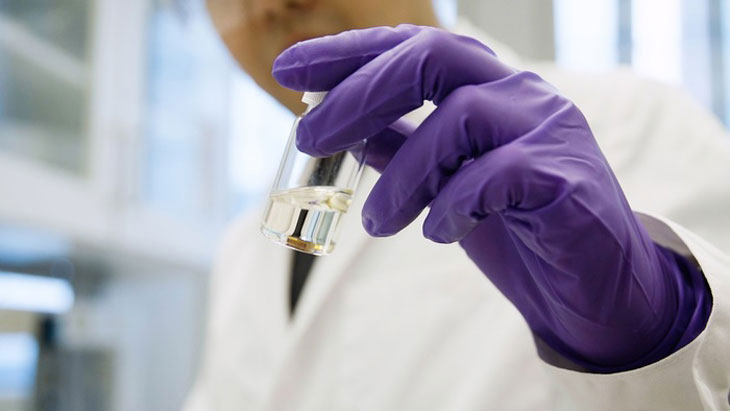Swedish researchers have unveiled the latest version of their promising liquid solar energy storage device, laying the groundwork for self-recharging electronics.
A promising technology
Developed by researchers at theChalmers University of Technology for more than a decade, technology MOST (Molecular Solar Thermal) is based on a molecule composed of carbon, hydrogen and nitrogen. In contact with sunlight, the atoms of the latter rearrange, changing its shape and transforming it into an energy-rich isomer that can be stored in liquid form.
The energy captured by the device MOST can be stored for 18 years, before a specially designed catalyst restores the molecule to its original shape and releases the energy in the form of heat. As part of recent work detailed in the review Cell Reports Physical Sciencethe Swedish team collaborated with scientists from theShanghai Jiao Tong Universitywho used a compact thermoelectric generator to turn that heat into electricity.
” The generator is an ultra-thin chip that could be embedded in electronic devices such as headsets, smartwatches and phones “, Explain Zhihang Wang, lead author of the new study. ” So far we have only generated small amounts of electricity, but the latest results show that the concept really works. »

“This is a radically new way of producing electricity from solar energy”
The current output power of the experimental device has been estimated at 0.1 nW (1.3 W/m³), which is quite low, but scientists see great potential in their system. MOSTwhich could address the intermittent nature of solar power generation by storing it for months or years and allowing it to be harnessed on demand.
“ It is a radically new way to generate electricity from solar energy, regardless of the weather, time of day, season or geographical location. “, highlighted Kasper Moth-Poulsen, co-author of the study. ” This closed system also has the advantage of being able to operate without generating carbon dioxide emissions.. »
Having now shown that the system can be used to generate electricity, the team is focused on improving its performance, while working on an affordable commercial solution to charge small electronics and even heat our homes.
[related_posts_by_tax taxonomies=”post_tag”]
The post This liquid device stores solar energy for years and releases it on demand appeared first on Gamingsym.

